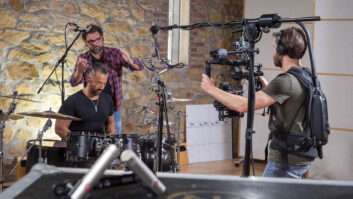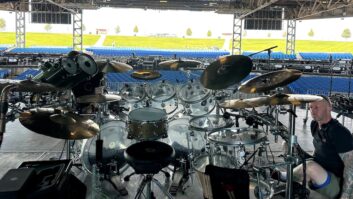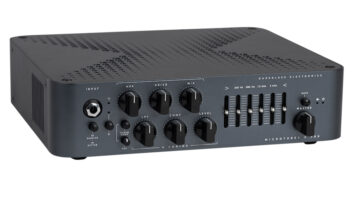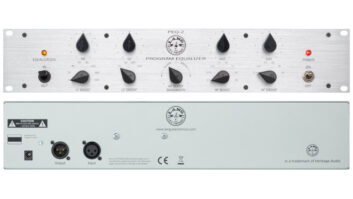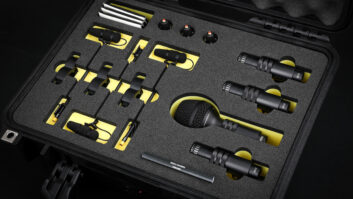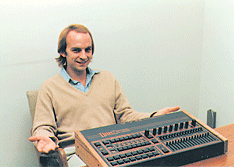
It isn’t often that an inventor creates a musical instrument that almost overnight changes the course of popular music, but Roger Linn is one such innovator. The concept of the drum machine wasn’t exactly new: Kimball received the first auto accompaniment patent decades before and Roland had its first drum box back in the 1960s. However, Linn’s LM-1 Drum Computer was the first programmable drum machine with realistic sampled drums and was an instant success among recording pros — even at a retail of $4,995.
Roger Linn in 1982, with the LinnDrum
The LM-1 had 18 8-bit/28kHz drum sounds but no cymbal samples because of the huge memory requirements of long sounds. Only some 500 units were sold — seemingly all to producers and composers who previously hired session players — putting studio drummers on the endangered species list. Suddenly, jobs sprang up for drum machine “programmers.” In 1982, the LM-1 was replaced by the LinnDrum, a lower-cost (only $3,000!) unit that added cymbal sounds, live drum trigger inputs and sounds that could be interchanged by swapping socketed internal ROM chips. But either way — LM-1 or LinnDrum — pop music would never be the same. In his post-LinnDrum life, Linn created Akai’s MPC Series and now operates Roger Linn Design, makers of the AdrenaLinn beat-synched multi-effects processor.
